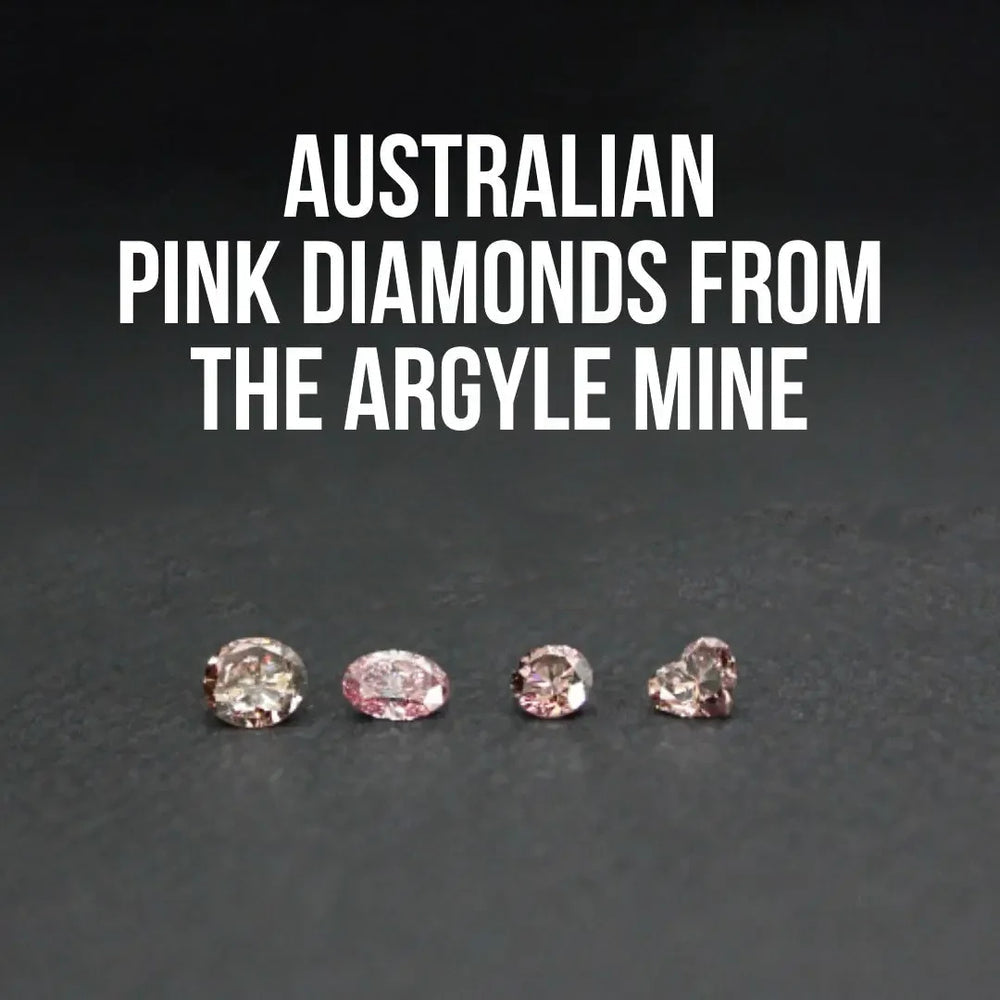The Formation Process of Diamonds

For centuries, diamonds have fascinated people around the world. Taking billions of years to create, these beauties formed deep below the earth's crust with high pressures and extremely hot temperatures. They were carried to the earth's surface by volcanic pipes of kimberlite or lamproite.
Long after they formed, diamonds were found scattered along rivers and streams in India. They were very rare - so rare that only the elite were allowed to wear them.
Diamonds come in a variety of colours, the most common being nearly colourless or with hints of yellow or brown. The variation of colours in those diamonds is due to the presence of other elements such as boron or nitrogen. At the other end of the scale are the rarer diamonds which display stunning shades of yellow, brown (chocolate), blue, violet, pink and red - with red being the rarest.
It is believed that pink diamonds obtain their colour due to changes in their molecular structure, resulting in the diamonds' reflecting pink light. This happens when they rise to the earth's surface and are subjected to immense pressure.
Australian Pink Diamonds from the Argyle Mine

Australia is lucky to be the home of the best source of natural pink diamonds. They were discovered in 1979 in the remote area of East Kimberley in Western Australia, which is 3,040 kilometres north of Perth.
In 1983 the Argyle Mine began mining the pink diamonds and over 90% of the world's pink diamonds originated from this location. These diamonds are naturally coloured and conflict free.
On 3 November 2020 the Argyle Mine wrapped up operations after the supply had been depleted. Australian Pink Diamonds from the Argyle Mine are now even more scarce and sought after.
Where Else Can You Find Pink Diamonds?

Deposits of pink diamonds have been found in other areas of the world, however none have matched the quality and intense colour that was found in the Australian Argyle Mine. Other locations for pink diamonds include Brazil, South Africa, Russia, and Canada.
Excerpt from Argyle Pink Diamonds

"The ancient story of Argyle pink diamonds begins in the heart of Western Australia's remote East Kimberley region, where a hidden treasure lay for over a billion years. The discovery of diamonds glinting in an anthill changed the course of history, throwing open a jewel box of kaleidoscopic colours unlike anything the world had ever seen.
For more than three decades the Argyle Diamond Mine has unearthed a spectrum of coloured diamonds, from pale blush through to vivid pink, cornflower blue, potent violet and sumptuous red.
Although the Argyle Diamond Mine was the world's largest source of pink diamonds, astonishingly less than one percent of diamonds from the mine are pink."
"The diamonds are uniquely identified in a Rio Tinto Diamonds database, and are traced from source within a chain of custody process developed and monitored by Rio Tinto's independent auditors."
Diamond Trivia

Image of Kimberlite
Element: Carbon (they are the only gemstone formed from 1 element)
Mohs' scale of hardness: 10 (one of the hardest naturally occurring substances on earth)
Name: Comes from Greek word Adamas, which means indestructible or unconquerable
Uses: Diamonds are not just used in jewellery, they are also used in tools such as diamond saw blades and drill bits.
Birthstone: April
Period of formation: Older than dinosaurs, diamonds formed approximately one to three billion years ago
Kimberlite: A rock that is formed from magma which has a blue tinge to it
Lamproite: Similar to the rock kimberlite, however it is rarer and has a greenish-grey freckled appearance

